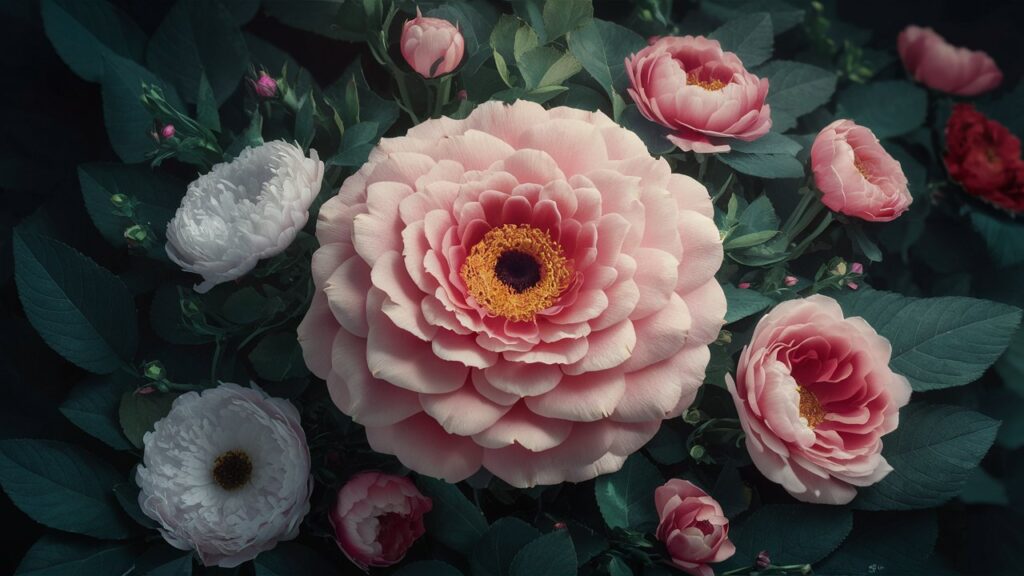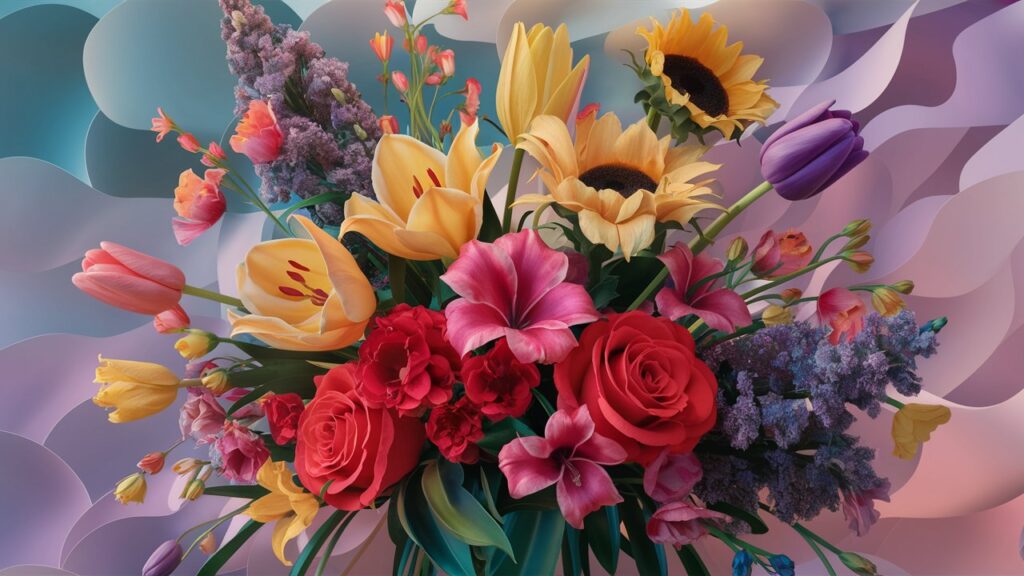
Introduction to Floral Beauty
Flowers have long captured human fascination with their enchanting beauty and diverse forms. Each bloom tells a story, representing different emotions and occasions. From the classic elegance of roses to the wild charm of daisies, flowers brighten our world and touch our hearts. This article delves into the captivating world of flowers, exploring their beauty and significance.
A Kaleidoscope of Colors
One of the most alluring aspects of flowers is their vibrant colors. Each hue holds its charm and meaning. Red roses symbolize love and passion, while yellow sunflowers convey joy and friendship. The delicate pink of cherry blossoms represents renewal and the fleeting nature of life. This spectrum of colors not only pleases the eye but also communicates feelings that words sometimes fail to express.
Shapes and Sizes
Flowers come in an astonishing variety of shapes and sizes. From the tiny, delicate blossoms of forget-me-nots to the grand and majestic blooms of sunflowers, there is a flower for every preference. Orchids capture the imagination with their intricate and exotic shapes, while the simple yet elegant tulips are beloved worldwide for their classic form.
Fragrance: The Invisible Allure
The fragrance of flowers adds another layer to their allure. The sweet scent of jasmine can evoke memories of warm summer nights, while the fresh aroma of lavender is known for its calming properties. Fragrance plays a significant role in pollination, attracting bees, butterflies, and other pollinators to the flowers.
Symbolism and Meaning
Flowers have been used for centuries to convey messages and emotions. The language of flowers, or floriography, was prevalent in the Victorian era. For example, a bouquet of white lilies symbolizes purity and virtue, while marigolds represent passion and creativity. Understanding the symbolism of flowers adds depth to their beauty.
Flowers in Art and Culture
Flowers have been a source of inspiration for artists and writers throughout history. From Van Gogh’s sunflowers to Georgia O’Keeffe’s close-up paintings of blooms, flowers have been depicted in countless works of art. Literature, too, is replete with floral references, from Shakespeare’s sonnets to modern poetry.
The Role of Flowers in Ecology
Beyond their beauty, flowers play a crucial role in the ecosystem. They are essential for plant reproduction, providing nectar and pollen to pollinators like bees, butterflies, and hummingbirds. This symbiotic relationship is vital for the health of our planet, as many plants rely on these interactions to produce fruit and seeds.
Gardening: Bringing Beauty Home
Gardening is a popular hobby that allows people to bring the beauty of flowers into their backyards. Whether cultivating a small balcony garden or a sprawling floral landscape, gardening provides a sense of accomplishment and connection to nature. It’s a therapeutic activity that rewards patience and care with blooming beauty.
The Healing Power of Flowers
Flowers are not only visually pleasing but also have therapeutic benefits. Horticultural therapy uses gardening and plant-based activities to improve mental and physical health. Being around flowers can reduce stress, enhance mood, and improve cognitive function.

Flowers in Celebrations and Traditions
Flowers are an integral part of many cultural celebrations and traditions. Weddings, funerals, birthdays, and holidays often feature floral arrangements to convey emotions and mark special occasions. Each culture has unique floral customs, adding richness and diversity to global traditions.
Sustainability in Floriculture
The demand for flowers has led to a booming floriculture industry. However, it’s essential to consider sustainability in flower production. Eco-friendly practices, such as organic farming, water conservation, and reducing chemical use, help protect the environment. Supporting local flower farmers also promotes sustainability and reduces carbon footprints.
The Future of Flower Breeding
Advancements in technology and genetics are paving the way for exciting developments in flower breeding. Scientists are creating new varieties with enhanced colors, longer bloom times, and improved resistance to pests and diseases. These innovations enhance the beauty of flowers and contribute to agricultural sustainability.
The Magic of Wildflowers
Wildflowers bring a touch of natural beauty to any landscape. Unlike cultivated varieties, wildflowers grow spontaneously in nature, often thriving in challenging conditions. They play a crucial role in supporting biodiversity and providing habitat and food for wildlife. Wildflower meadows are a testament to nature’s resilience and creativity.
Flowers in Literature and Folklore
Flowers have a rich presence in literature and folklore. They are often used as symbols to convey deeper meanings and themes. For example, in William Wordsworth’s famous poem “I Wandered Lonely as a Cloud,” daffodils symbolize beauty and the joy of nature. Folktales from various cultures also feature flowers, often imbuing them with magical qualities.
The Joy of Flower Arranging
Flower arranging is an art form that combines creativity and skill. Floral arrangements can transform a space, adding color, texture, and fragrance. Whether organizing a simple bouquet or creating an elaborate centerpiece, selecting and arranging flowers is both meditative and satisfying.
Preserving Flower Beauty
Many people enjoy preserving the beauty of flowers through drying or pressing. These techniques allow flowers to be kept as mementos or used in crafts. Dried flowers can retain their color and shape for years, serving as a lasting reminder of special moments or adding a touch of natural beauty to home décor.

Flowers in Modern Design
Flowers continue to be a source of inspiration in modern design. Floral patterns are popular in fashion, interior design, and graphic design. They add a touch of nature and femininity to various products and spaces. The timeless appeal of floral motifs ensures they remain a beloved design element.
Also Read: Wallpaper:hq2hr3icmae= cats: Discover the Best Cat Wallpapers
Flowers and Technology
Technology has transformed the way we experience and interact with flowers. Technology enhances our understanding and appreciation of flowers, from virtual flower shops to apps that help identify different species. Social media platforms allow flower enthusiasts to share their passion and discover new floral trends.
The Universal Language of Flowers
Flowers have a unique ability to transcend language barriers and connect people across cultures. A bouquet can express love, sympathy, gratitude, and many other emotions without words. This universal language makes flowers a powerful and cherished part of human expression.
Conclusion: The Timeless Appeal of Flowers
Flowers are a timeless symbol of beauty and a vital part of our natural world. Their colors, shapes, and fragrances captivate our senses and enrich our lives. Whether admired in a garden, used in celebrations, or appreciated for their ecological importance, flowers inspire and bring joy to people everywhere. The beauty of flowers, encapsulated in their natural elegance, is a testament to the wonder of the natural world.
[…] Also Read: beautiful:by5oj2_qmci= flowers […]
[…] Also Read: beautiful:by5oj2_qmci= flowers […]